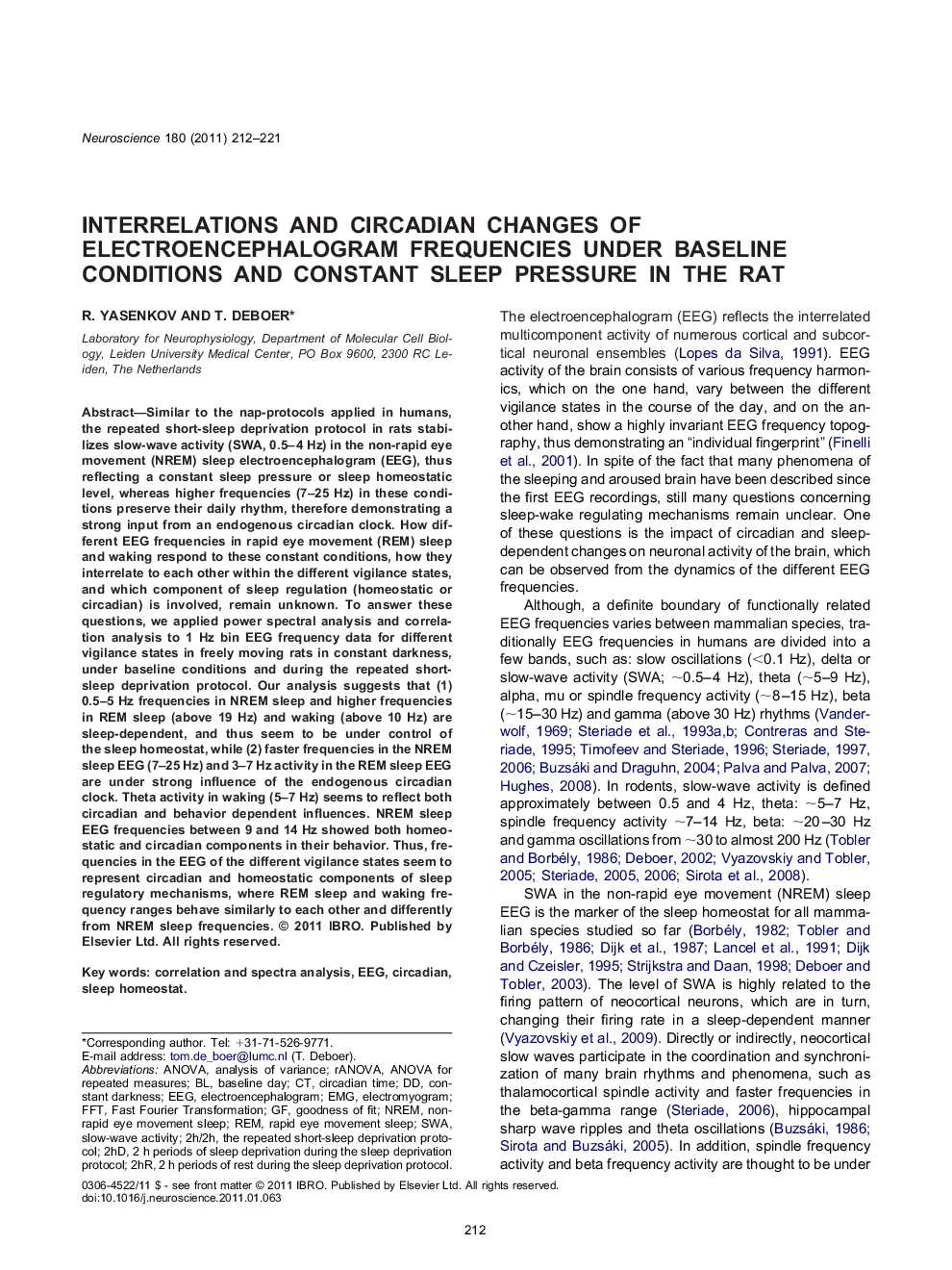| کد مقاله | کد نشریه | سال انتشار | مقاله انگلیسی | نسخه تمام متن |
|---|---|---|---|---|
| 4339003 | 1614896 | 2011 | 10 صفحه PDF | دانلود رایگان |

Similar to the nap-protocols applied in humans, the repeated short-sleep deprivation protocol in rats stabilizes slow-wave activity (SWA, 0.5–4 Hz) in the non-rapid eye movement (NREM) sleep electroencephalogram (EEG), thus reflecting a constant sleep pressure or sleep homeostatic level, whereas higher frequencies (7–25 Hz) in these conditions preserve their daily rhythm, therefore demonstrating a strong input from an endogenous circadian clock. How different EEG frequencies in rapid eye movement (REM) sleep and waking respond to these constant conditions, how they interrelate to each other within the different vigilance states, and which component of sleep regulation (homeostatic or circadian) is involved, remain unknown. To answer these questions, we applied power spectral analysis and correlation analysis to 1 Hz bin EEG frequency data for different vigilance states in freely moving rats in constant darkness, under baseline conditions and during the repeated short-sleep deprivation protocol. Our analysis suggests that (1) 0.5–5 Hz frequencies in NREM sleep and higher frequencies in REM sleep (above 19 Hz) and waking (above 10 Hz) are sleep-dependent, and thus seem to be under control of the sleep homeostat, while (2) faster frequencies in the NREM sleep EEG (7–25 Hz) and 3–7 Hz activity in the REM sleep EEG are under strong influence of the endogenous circadian clock. Theta activity in waking (5–7 Hz) seems to reflect both circadian and behavior dependent influences. NREM sleep EEG frequencies between 9 and 14 Hz showed both homeostatic and circadian components in their behavior. Thus, frequencies in the EEG of the different vigilance states seem to represent circadian and homeostatic components of sleep regulatory mechanisms, where REM sleep and waking frequency ranges behave similarly to each other and differently from NREM sleep frequencies.
▶Functional frequencies in the rodent EEG identified by a statistical analysis. ▶Sleep homeostasis is reflected by the faster EEG frequencies in REM sleep and waking. ▶Circadian and homeostatic sleep processes are reflected in the REM and waking EEG. ▶The circadian clock is reflected in theta frequencies of REM sleep and waking. ▶NREM sleep 9–12 Hz EEG frequencies show both homeostatic and circadian fluctuations.
Journal: Neuroscience - Volume 180, 28 April 2011, Pages 212–221